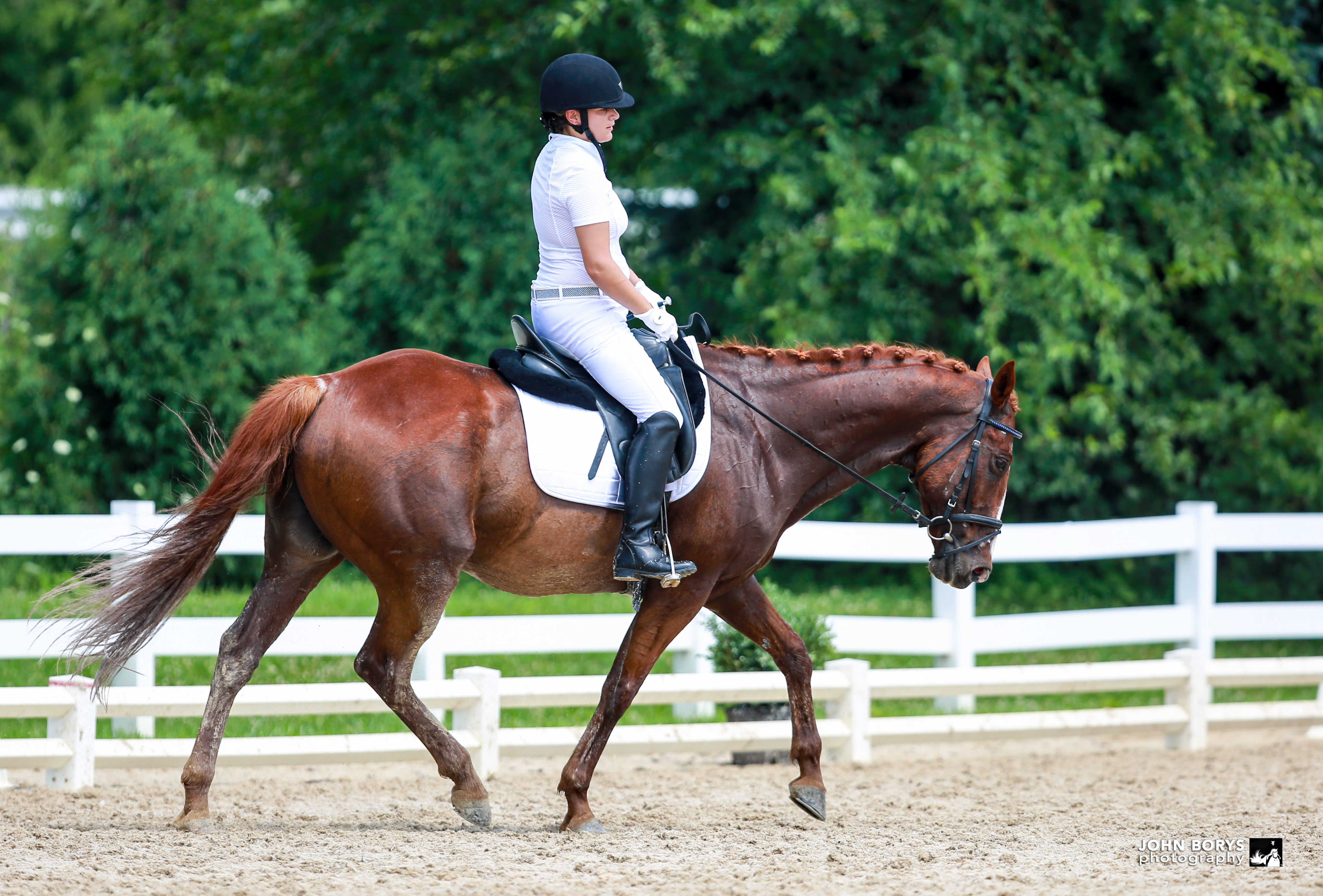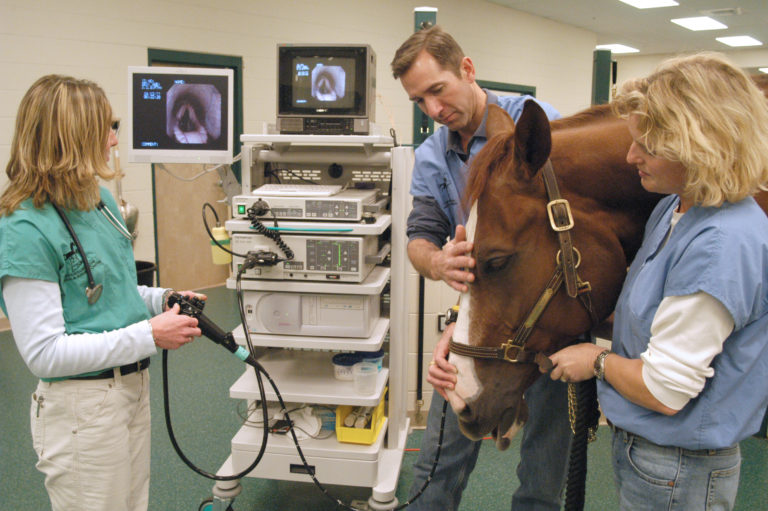
This picture shows Holly Kranz competing her American Quarter Horse, Wrangler, in a Training Level test. She describes Wrangler as a very kind horse and says she is aiming to develop more swing in his back.
When I look at the picture it is obvious to me that Wrangler’s hindquarters—being a Quarter Horse—are better developed than his back, shoulders and neck. Holly is correct in aiming for more activity in his back. Yet Wrangler does look very willing and seems to be trying to perform what is asked of him. He steps well under his rider’s weight and is looking for steady contact to help him balance his movement.
When I look at Holly, the first thing I notice is that her head position is tilted. Even though the picture is taken from the side, you can clearly notice that her neck is bent and turned to the right. The habit of tilting your head immediately influences your hand position, making it harder to keep a forward tendency in the contact. For Holly, looking in the direction she wants to ride is important but she must stay aligned in her balance and the horse’s neck position. My tip for her is to think about keeping her ears level. She should also deliberately move her head a couple of times, turning it left and right so that she can become better aware of the correct middle position.
During the moment that his picture was taken, I guess that Holly is in rising trot and is just about to land and sit down. This explains why her seat is slightly above the saddle. For sitting trot, it would lack depth and connection. However, even in the rising trot, Holly needs to keep her balance line correct to be able to stay effective.
If you draw a line from her ear vertically downward, through her shoulders, hips and leg, you can see that her leg is too far forward or her upper body is a bit behind the movement. Both cases do not allow her optimal influence and support of the horse’s hind leg. I can understand that Holly does not want to lean farther forward as Wrangler already is lower in the front than behind, but she needs to understand that a forward upper body does not place more weight to the front as long as it is balanced.
To feel this: Stand on the ground with slightly more weight in your heels. Then start bending your knees and bringing your upper body forward like a downhill skier. You will be able to feel that even with your upper body far forward, you can keep more weight on the back of your feet.
To better feel the balance point of her rising trot and to improve her leg position, I would advise Holly to try this: Post the trot for a few strides continuously. This will help you feel when and how much you need to bring your weight forward to align it with the base of your balance (knees and stirrups). You should play with your upper-body position from nearly horizontal (leaning parallel to your horse’s neck) to standing up vertically while balancing in the stirrups.
I also get the impression that Holly is bending more to the right in her own body than Wrangler is bending in his. This is actually the reverse of how it should be: The rider should stay stable and rotate only as much as the horse bends. To get a better feel for the lateral stability within her upper body, Holly could try this: While riding a posting trot, hold one arm up, slightly in front of your head, with your palm facing upward. As you sit down, your hand should push even a little farther up and more forward, becoming a counter movement to your pelvis moving down. Contrast is the key for stability, and inside the body, it’s the key for a stable yet supple core.
Imagine a guitar string. It can vibrate only when attached on both ends and stretched to the correct key-note. Core stability also requires this stretch (from your pelvis to your head) and only then can your back be stable and supple enough to follow your horse’s back movement with the necessary positive tension. This is true for the horse in the same way. The back of the horse can swing only when it is attached between the impulsion from behind and the contact in the front.
For Wrangler I would work at home with a lot of cavalletti—trotting poles to encourage him to carry his shoulders more—and ride many, many transitions to strengthen his connection from back to front.
I hope this will prove helpful for Holly and Wrangler.
Susanne von Dietze is a leader in equestrian biomechanics. A physiotherapist, licensed Trainer A instructor and judge for dressage and show jumping, she gives lectures and seminars throughout the world, including at the prestigious German Riding Academy in Warendorf. She is a native of Germany and now lives with her husband and three children in Israel, where she competes at the international level. She is the author of two books on the biomechanics of riding: Balance in Movement and Horse and Rider, Back to Back. Find her books at www.EquineNetworkStore.com.
This article first appeared in the April 2017 issue of Dressage Today magazine.











